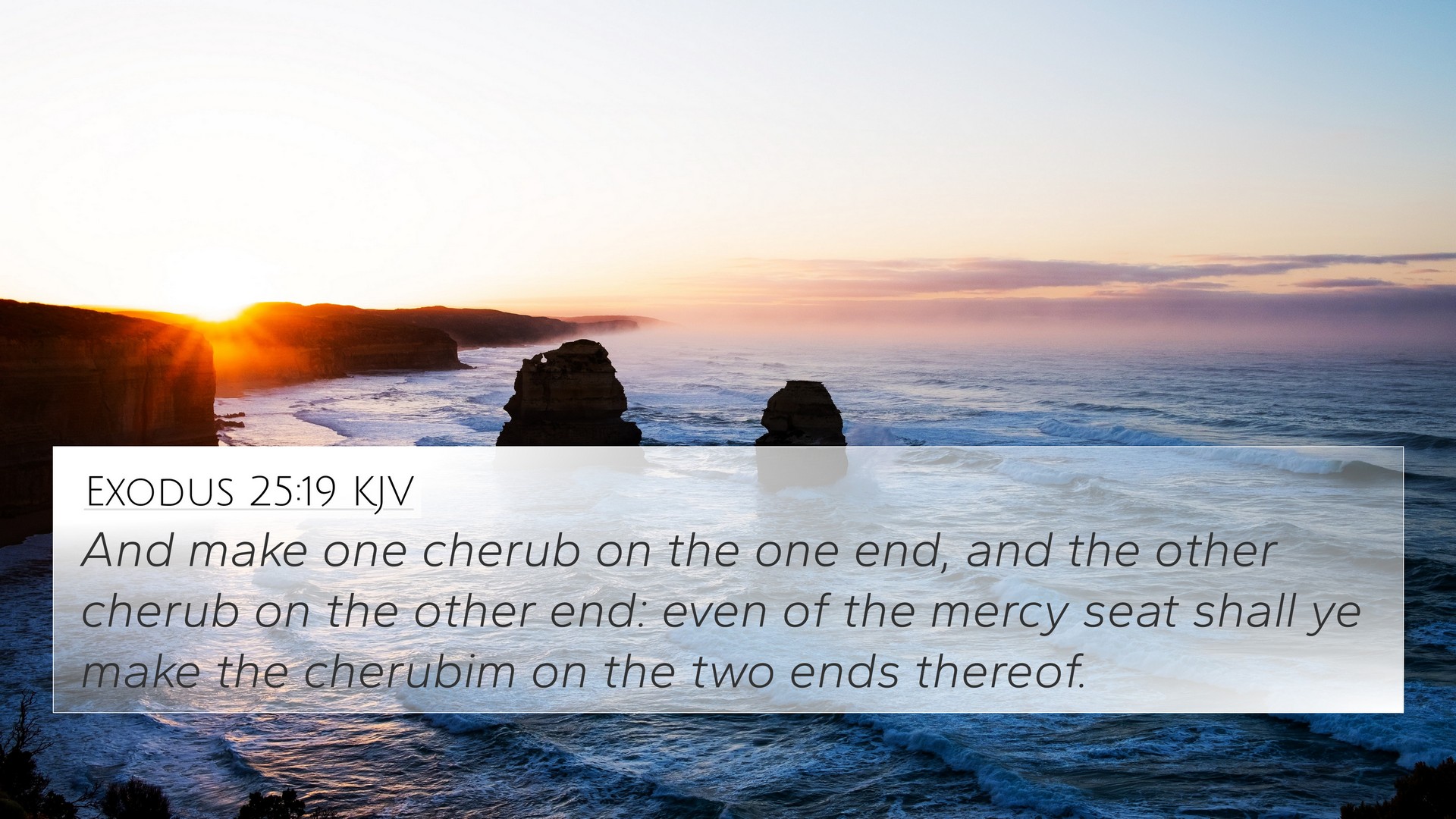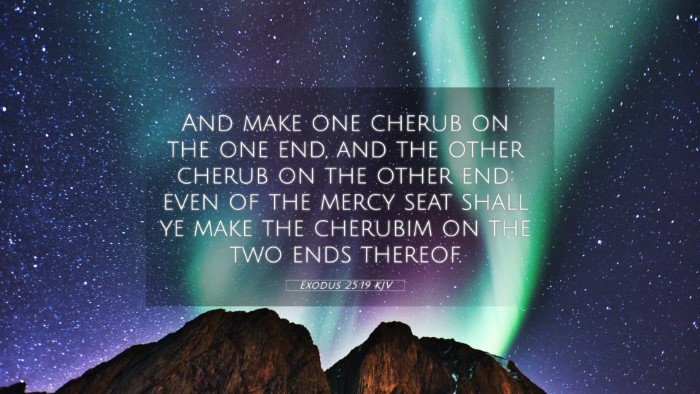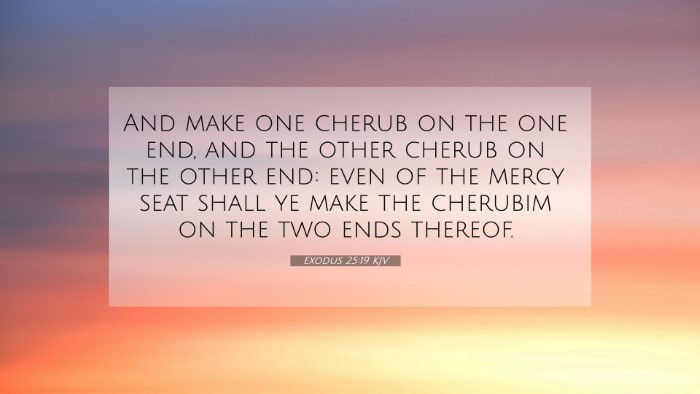Understanding Exodus 25:19
Exodus 25:19 states: "And make one cherub on the one end, and the other cherub on the other end: even of the mercy seat shall ye make the cherubims on the two ends thereof."
This verse is part of God's instructions to Moses regarding the construction of the Ark of the Covenant. The verse emphasizes the significance of the cherubim, which represent divine presence and glory. The mercy seat, located atop the Ark, symbolizes God's grace and mercy towards His people.
Summary from Public Domain Commentaries
-
Matthew Henry:
Henry highlights the essentiality of cherubim in representing God's protection and holiness. He suggests that the cherubim serve as guardians of the divine presence, signifying that God's interaction with humanity requires righteousness and holiness.
-
Albert Barnes:
Barnes elaborates on the artistic and symbolic aspects of the cherubim. He points out that their placement on the mercy seat indicates that they are the emissaries of God's mercy, bridging the divine and human realms.
-
Adam Clarke:
Clarke notes that the cherubim, crafted from pure gold, reflect the glory of God. He interprets their wings overshadowing the mercy seat as a visual representation of God's protective grace, reinforcing the theme of divine presence in worship.
Bible Verse Cross-References
- Numbers 7:89: Indicates the importance of speaking with God at the mercy seat.
- Hebrews 9:5: Refers to the cherubim as part of the heavenly elements.
- Psalm 80:1: Uses the imagery of God dwelling between the cherubim.
- Isaiah 37:16: Mentions the Lord as God who sits upon the cherubim.
- 1 Samuel 4:4: References the Ark as a symbol of God’s presence among His people.
- Revelation 4:6-8: Describes beings in heaven that bear resemblance to cherubim.
- Genesis 3:24: Describes cherubim guarding the way to the Tree of Life.
Thematic Connections
The cherubim in Exodus 25:19 serve as a powerful link between various themes in the Bible, including:
- Divine Presence: The cherubim guard the mercy seat, emphasizing the holiness required to be in God’s presence.
- Mercy and Judgment: The mercy seat signifies God's mercy amid His judgment.
- Intercession: The cherubim are symbolic of intercessors, representing the prayers of the faithful ascending to God.
Cross-Referencing Bible Study Techniques
To enhance your understanding of Exodus 25:19, consider the following cross-referencing techniques:
-
Bible Concordance: Utilize a concordance to find related verses and their contexts.
-
Bible Chain References: Follow the themes through chain references from one verse to another.
-
Comparative Bible Verse Analysis: Compare different interpretations of similar verses across translations.
Using Bible Cross-References Effectively
Understanding how to effectively utilize Bible cross-references will deepen your appreciation for the scriptures. Engage in:
-
Inter-Biblical Dialogue: Explore how themes in Exodus resonate throughout both the Old and New Testaments.
-
Identifying Connections: Investigate the parallels between Exodus 25:19 and New Testament references to divine mercy.
-
Thematic Studies: Conduct studies on themes such as mercy, presence of God, and angelic beings as they are woven through scripture.
Conclusion
Exodus 25:19 is rich with meaningful interpretations that stem from its context within the Book of Exodus and its connections to the broader tapestry of scripture. The cherubim serve to remind believers of the importance of divine holiness and mercy, anchoring their faith in the artistry of God's Word. Through utilizing various Bible cross-references, believers can uncover layers of meaning that span both testaments and enrich their spiritual journey.


